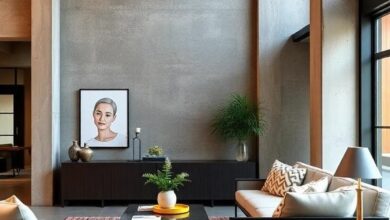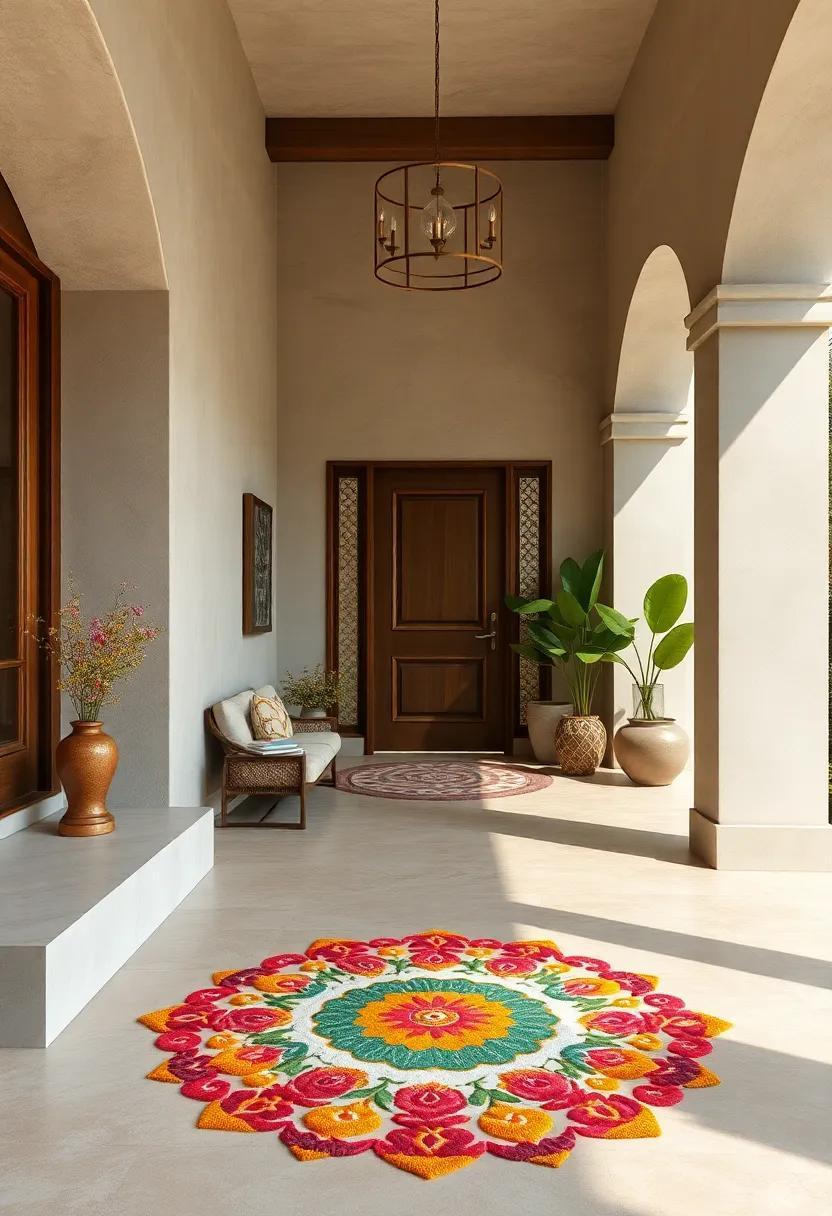
23 Stunning Traditional Indian Rangoli Designs to Brighten Your Entryway Steps
Step into the vibrant world of Indian artistry with our curated collection of 23 stunning traditional Rangoli designs, perfect for brightening your entryway steps. Rangoli, an age-old practise of creating intricate patterns with colored powders, flowers, and rice, symbolizes warmth, prosperity, and welcome. Whether you’re preparing for a festive occasion or simply wish to add a touch of cultural elegance to your home, this listicle offers a diverse array of designs-from classic motifs to creative twists-that are both inspiring and accessible. Dive in to discover ideas that blend tradition with creativity, and learn how to transform your doorstep into a captivating canvas of colour and festivity.
Classic Geometric Rangoli: Symmetrical patterns featuring circles,squares,and triangles create a timeless and balanced design
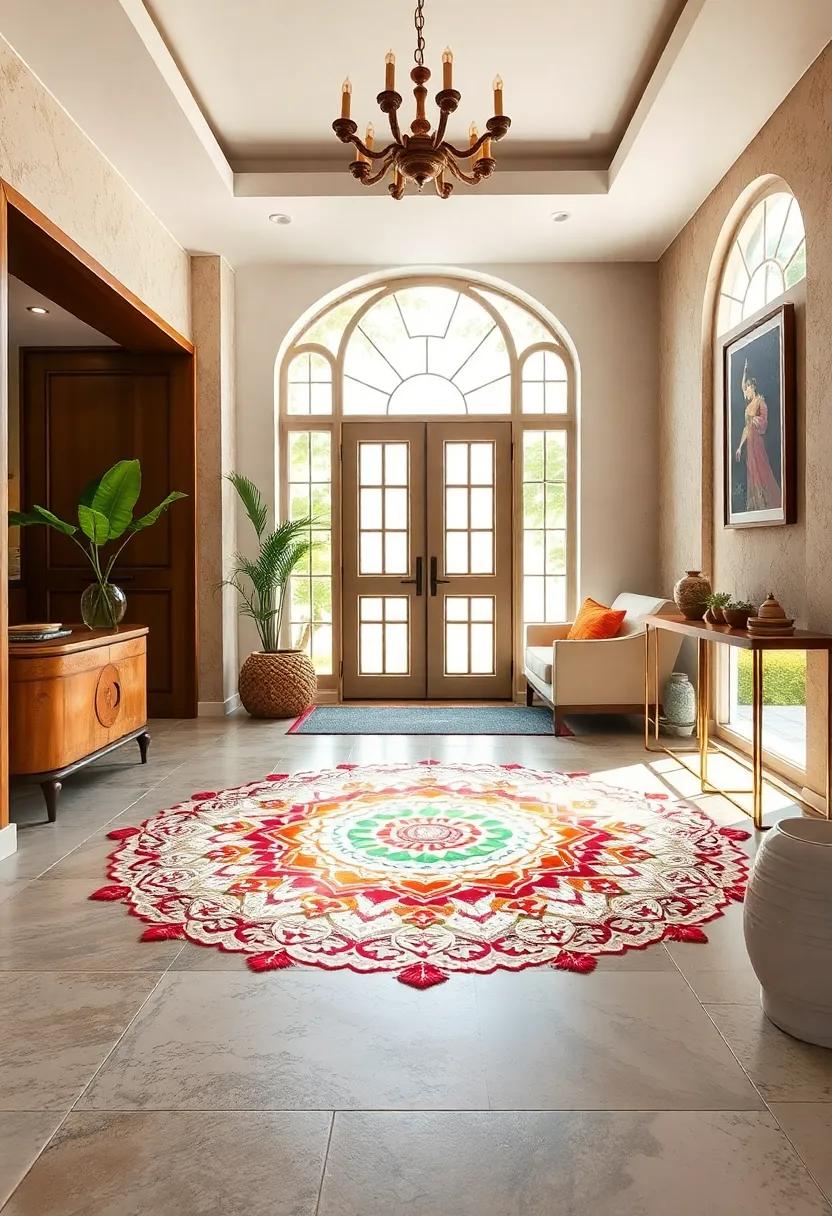
At the heart of timeless elegance lies the classic geometric rangoli, where symmetry and precision take center stage. By weaving together circles, squares, and triangles, these designs evoke harmony and balance, captivating the eye with their rhythmic repetition. This style offers a meditative experience for the creator, as each shape seamlessly flows into the next, creating a mesmerizing visual dance that never grows old. Whether crafted with vibrant powders or natural dyes, these geometric arrangements illuminate entryways with an understated yet profound beauty.
Choosing classic geometric patterns not only honors tradition but also imbues your space with positive energy, believed to attract好运 (good fortune). Consider incorporating these versatile elements:
- Concentric Circles: Symbolize unity and eternity, drawing focus toward the center.
- Intersecting Triangles: Represent harmony between opposing forces like earth and sky.
- Nested Squares: Emphasize stability and groundedness, framing the entire design.
| Shape | Symbolism | Design Tip |
|---|---|---|
| Circle | Wholeness & Continuity | Use multiple rings for depth |
| Triangle | Balance & Direction | Alternate orientations for dynamic flow |
| Square | Order & Foundation | Keep edges sharp for crisp outlines |
Floral rangoli: Intricate floral motifs with vibrant petals bring natural beauty and freshness to your entryway
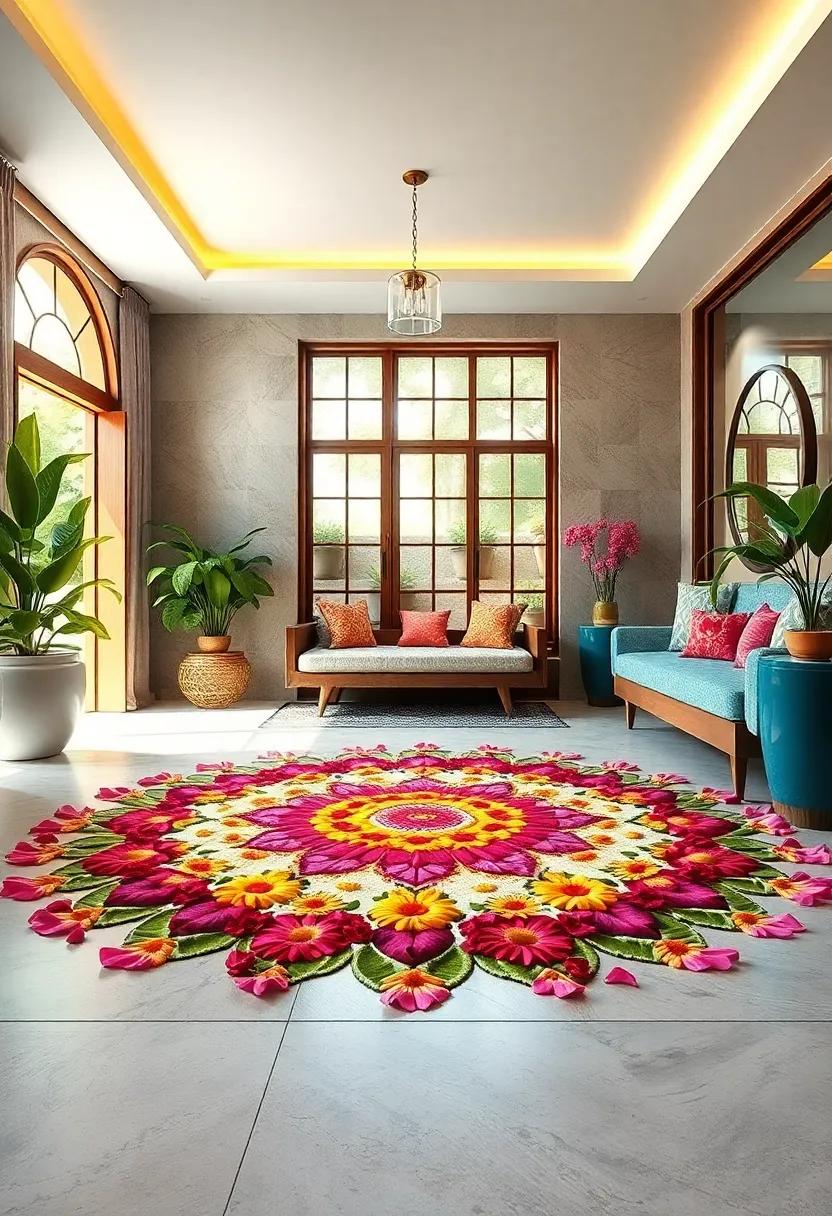
floral-inspired rangoli designs beautifully capture the essence of nature’s charm, inviting warmth and positivity right at your doorstep. Utilizing vibrant petals from marigolds,roses,and jasmines,these delicate patterns weave intricate motifs that mimic blooming flowers and intertwining vines. The colors, ranging from fiery reds to soothing yellows and lush greens, create a mesmerizing tapestry of life and festivity.as the petals are carefully layered, thay form a soft, inviting texture that naturally brightens your entryway, setting the perfect tone for celebrations and daily greetings alike.
Incorporating subtle details such as tiny buds, swirling leaves, and symmetrical blossoms adds depth and dimension to the floral rangoli, transforming a simple floor art into a captivating visual story. These designs are not only aesthetically pleasing but also symbolize renewal, growth, and harmony-a beatiful way to welcome guests and auspicious energy. For those seeking an effortless yet elegant touch, mixing fresh petals with powdered colors enhances durability and vibrancy, ensuring your floral masterpiece lasts throughout your special occasion.
Peacock Inspired Rangoli: Emulate the grace of India’s national bird with eye-catching peacock feather patterns and rich color gradients
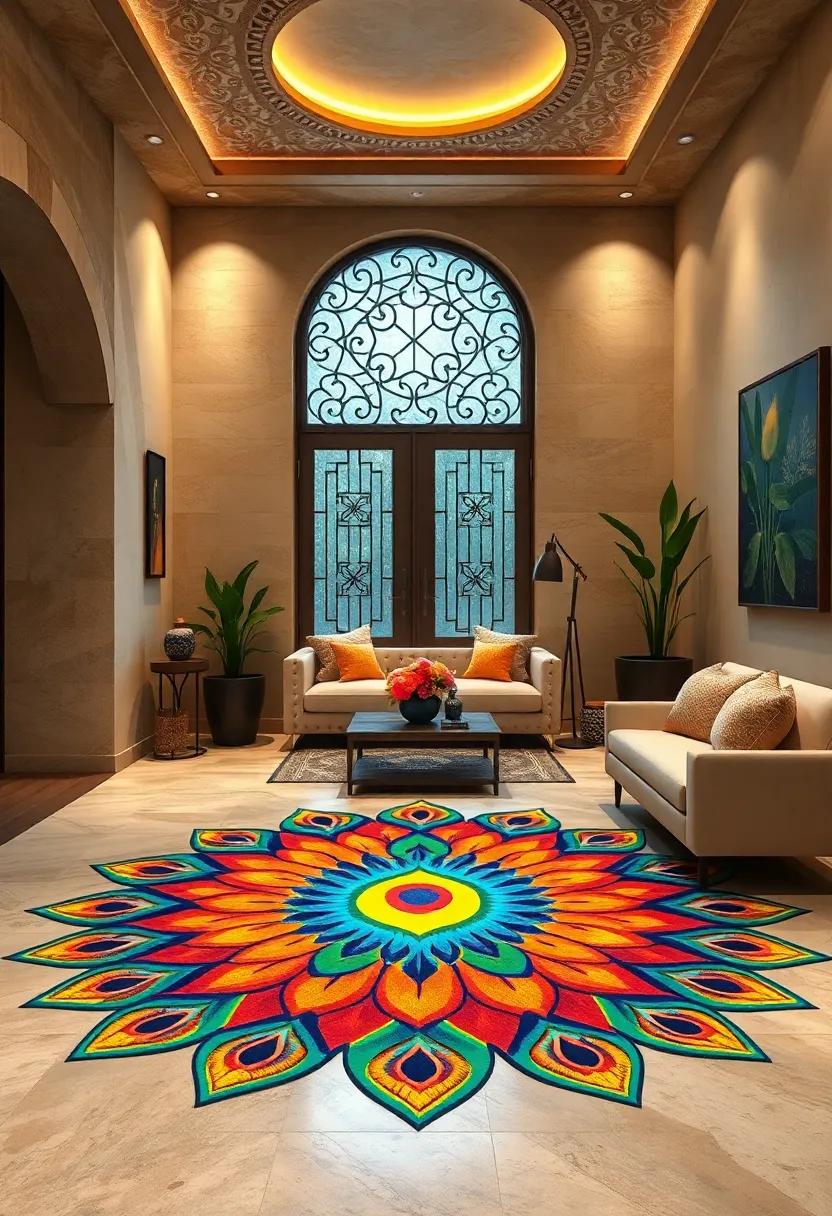
Capture the regal elegance of the peacock by incorporating its vibrant feathers and fluid motifs into your rangoli masterpiece. Start with sweeping arcs that mimic the natural curvature of peacock feathers, using bold strokes to outline the characteristic eye pattern. Experiment with a palette of rich blues,emerald greens,and shimmering golds to recreate the bird’s iridescent plumage. The subtle blending of colors in the feather gradients not only enhances depth but also adds a dynamic shimmer that seems to dance with every flicker of light. Embellish the central eye motif with touches of white or silver powder to evoke the delicate iris,drawing the viewer’s focus into this mesmerizing design.
To bring your creation to life, consider layering textures by mixing fine rangoli powders with coarse grains or incorporating natural elements like flower petals and tiny mirror pieces for reflective highlights. Your peacock-inspired rangoli can transform simple steps into a bold expression of cultural pride and artistic grace. For a finishing touch, surround your design with soft, glowing diyas or tea lights to underline the spiritual symbolism of the peacock-beauty, protection, and renewal-and make your entryway radiate warmth and welcome.
Dot Rangoli (Kolam): Simple yet mesmerizing dot-to-dot designs that form elegant lines and shapes, perfect for daily decoration
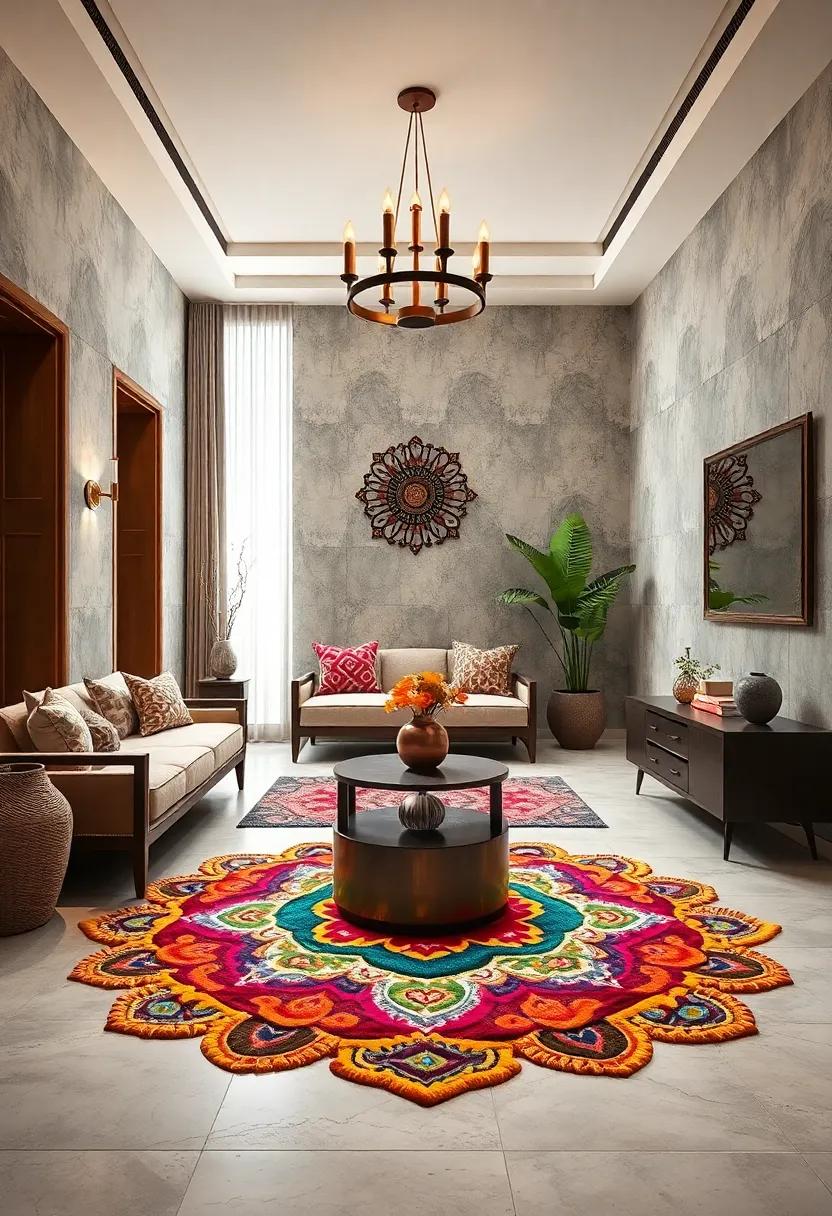
At the heart of many South Indian homes lies the graceful tradition of dot rangoli, a design style that transforms simple grids of dots into captivating patterns through connected lines and curves. This art form, also known as Kolam, combines symmetry and precision, making it both meditative to create and delightful to behold.Whether it’s a humble arrangement of dots forming delicate floral motifs or intricate geometric shapes,these designs add a subtle yet elegant charm to entryways without requiring complex tools or materials.
- Easy to customize: Vary the spacing and number of dots to craft unique variations each day.
- Swift to create: Ideal for daily decoration and welcoming guests with a fresh, neat look.
- symbolic meanings: Many dot rangolis represent auspiciousness, prosperity, and harmony.
For those wanting to experiment, a simple guide to dot rangoli formation can help you master several foundational designs-starting with straight lines connecting equidistant dots, progressing to intricate loops and interlaced curves.The tactile experience of drawing continuous lines over a grid invites mindfulness while showcasing timeless beauty. Perfect for morning rituals and festivals alike, dot rangoli designs can instantly brighten any doorstep with their rhythmic patterns and understated grace.
Swastika Rangoli: An ancient symbol of prosperity, this design integrates spiritual significance with artful symmetry
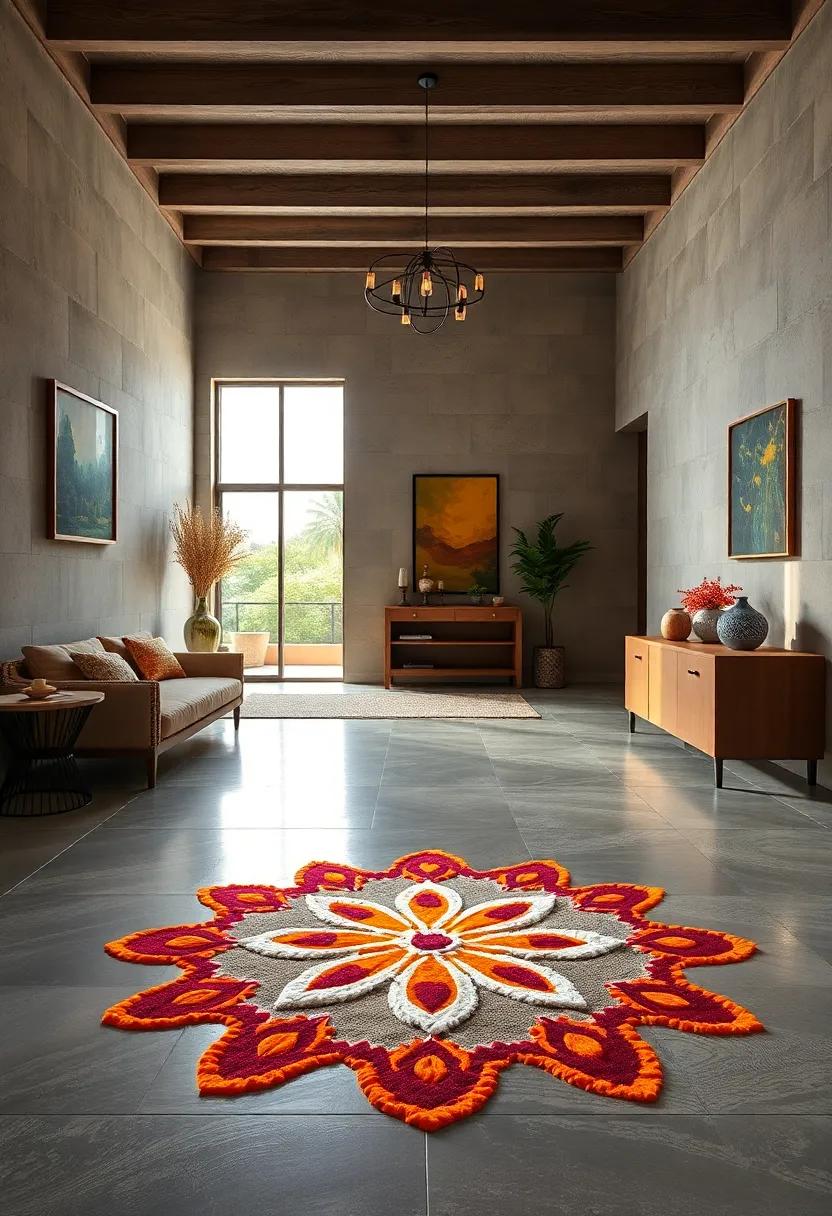
The Swastika Rangoli stands as a timeless emblem deeply woven into the fabric of Indian culture, embodying auspiciousness and spiritual harmony. Its geometric precision and repetitive arms create a mesmerizing symmetry that invites positive energy and good fortune right at your doorstep. Traditionally drawn with vibrant powders of red, yellow, and white, this design balances simplicity with profound meaning, making it a cherished choice for festivals, weddings, and daily prayer rituals.
The beauty of this pattern lies not just in its history but in its adaptability-artists often embellish the basic Swastika shape with floral motifs, dots, and borders to add layers of depth and color. Consider these popular variations:
- Floral Swirls: Incorporating petal shapes along each arm for a softer, festive feel.
- Dot Borders: Using tiny white or yellow dots to emphasize the edges and enhance visual contrast.
- Multi-colored Layers: Creating a gradient within each arm to symbolize growth and prosperity.
| Design element | Symbolic Meaning | Common Colors |
|---|---|---|
| Central Cross | Balance & Unity | Red,Orange |
| Four Arms | directional Protection | yellow,White |
| Dot Embellishments | Divine Blessings | White,Gold |
Diya Rangoli: Illustrate glowing oil lamps within the rangoli,symbolizing light and positivity at your doorstep
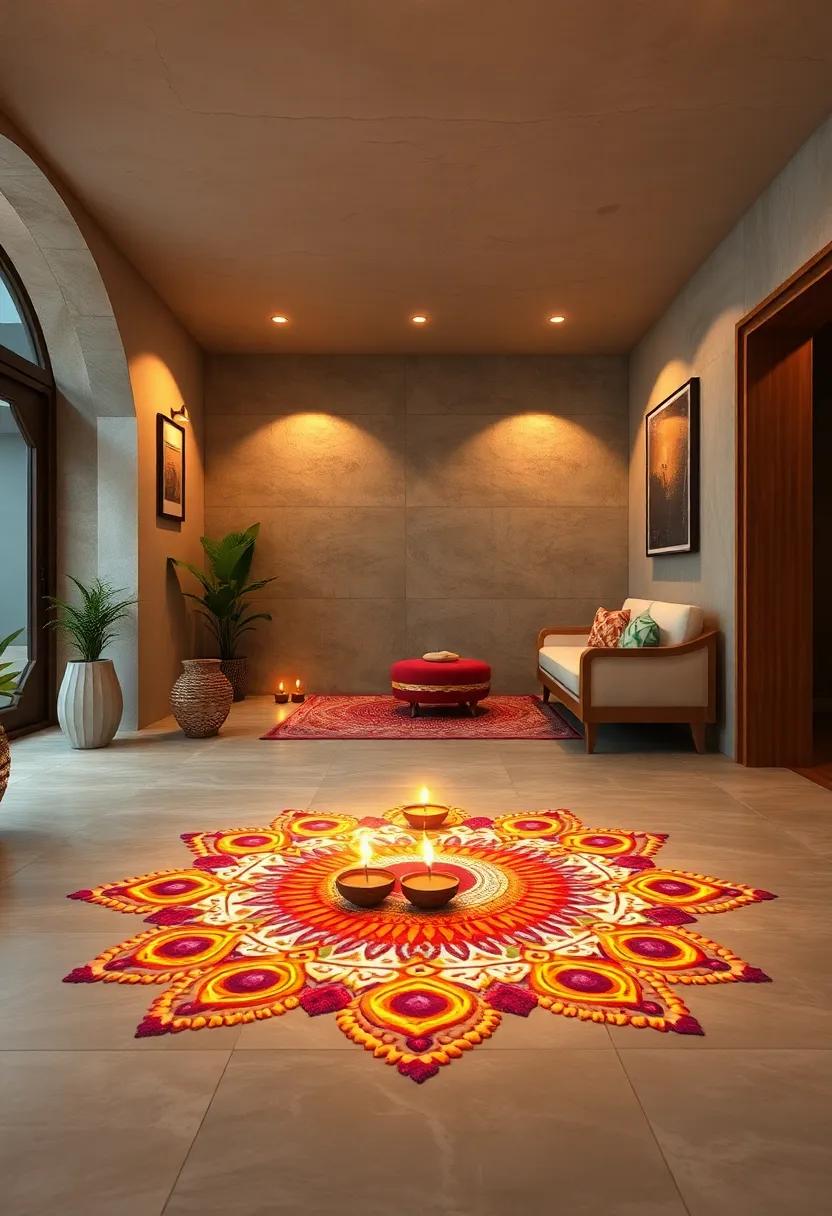
The warm flicker of oil lamps nestled within intricate rangoli patterns not only enhances the festive aura but also serves as a powerful emblem of hope and positivity. By integrating glowing diyas strategically around floral and geometric motifs, you invite a soothing ambiance that welcomes guests with an inviting glow. These luminous accents highlight the symmetrical beauty of the rangoli while symbolizing the dispelling of darkness and negativity from your doorstep.
Opt for vibrant hues in the rangoli base-like deep reds, saffron oranges, and lush greens-to contrast beautifully with the soft yellow or golden aura of the diyas. Incorporate elements such as:
- Swirls of powder color mimicking flames
- Glitter or reflective stones around the lamps for added sparkle
- Delicate petal arrangements framing each diya
This combination not only enriches the visual impact but creates a sacred space where tradition meets artistry, casting an eternal glow of positivity right at your entrance.
Mandala Rangoli: Complex circular motifs that radiate from a central point, representing wholeness and unity
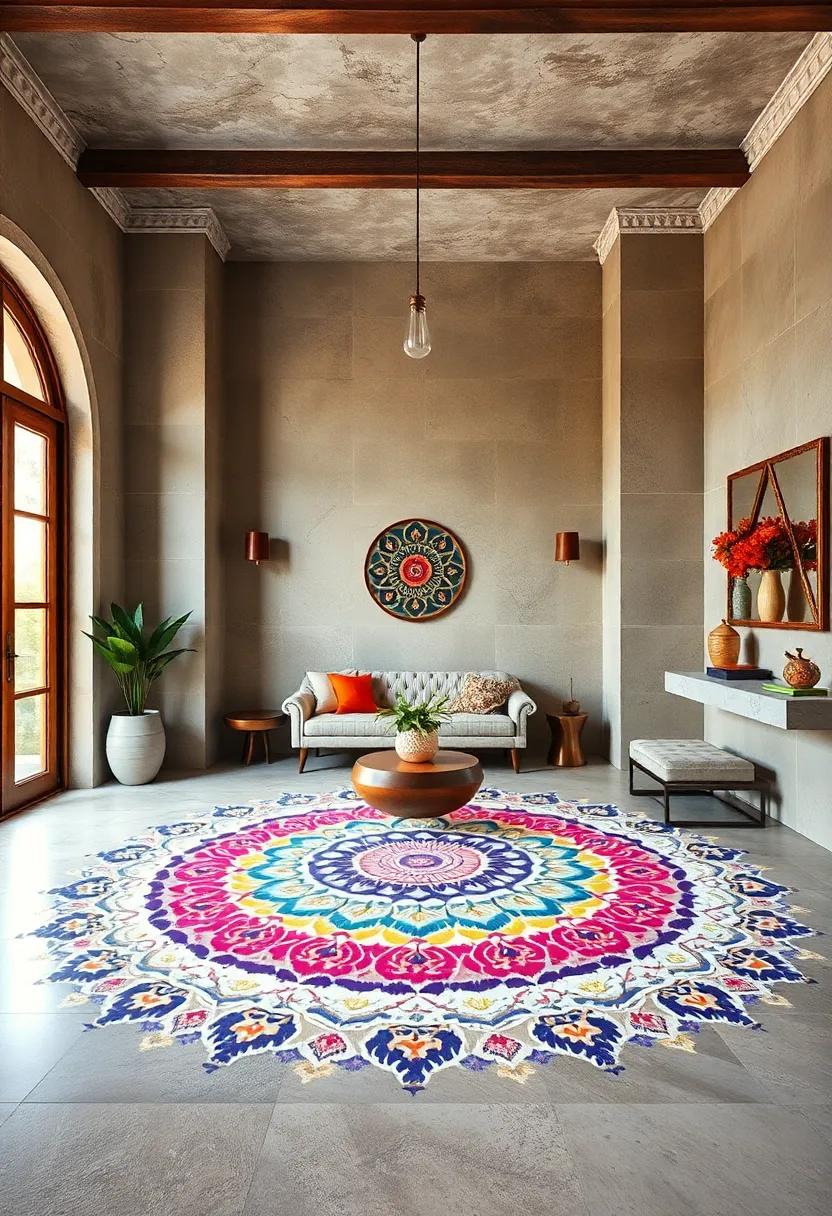
Mandala Rangoli designs captivate with their intricate circular patterns that effortlessly draw the eye inward to a vibrant center. these motifs are not just visually stunning but carry deep symbolism, embodying the ideas of wholeness, balance, and unity in Indian culture. Artists skillfully layer colors and shapes, weaving geometric precision with fluid artistry, creating mesmerising visuals that feel both meditative and dynamic. The harmonious repetition of petals, shapes, and dots around a central point represents the cosmic circle, inspiring a sense of peace and connectedness in anyone who beholds them.
creating a Mandala Rangoli involves a careful blend of tradition and creativity. Here are some key elements that make these designs distinctive:
- Central focal point: Frequently enough a shining dot or floral shape that anchors the entire design
- Symmetrical motifs: Balanced, repeating patterns radiate evenly to maintain harmony
- Layered colors: Gradations and contrasts emphasize depth and movement
- Intricate detailing: Tiny flourishes between larger shapes add texture and complexity
| Common Symbol | Meaning |
|---|---|
| Circle | Unity and infinity |
| Lotus petal shapes | Purity and enlightenment |
| Dots | Seeds of creation |
| Spirals | Growth and evolution |
Ganesha Rangoli: Incorporate the revered deity of beginnings and luck to invoke blessings for the home
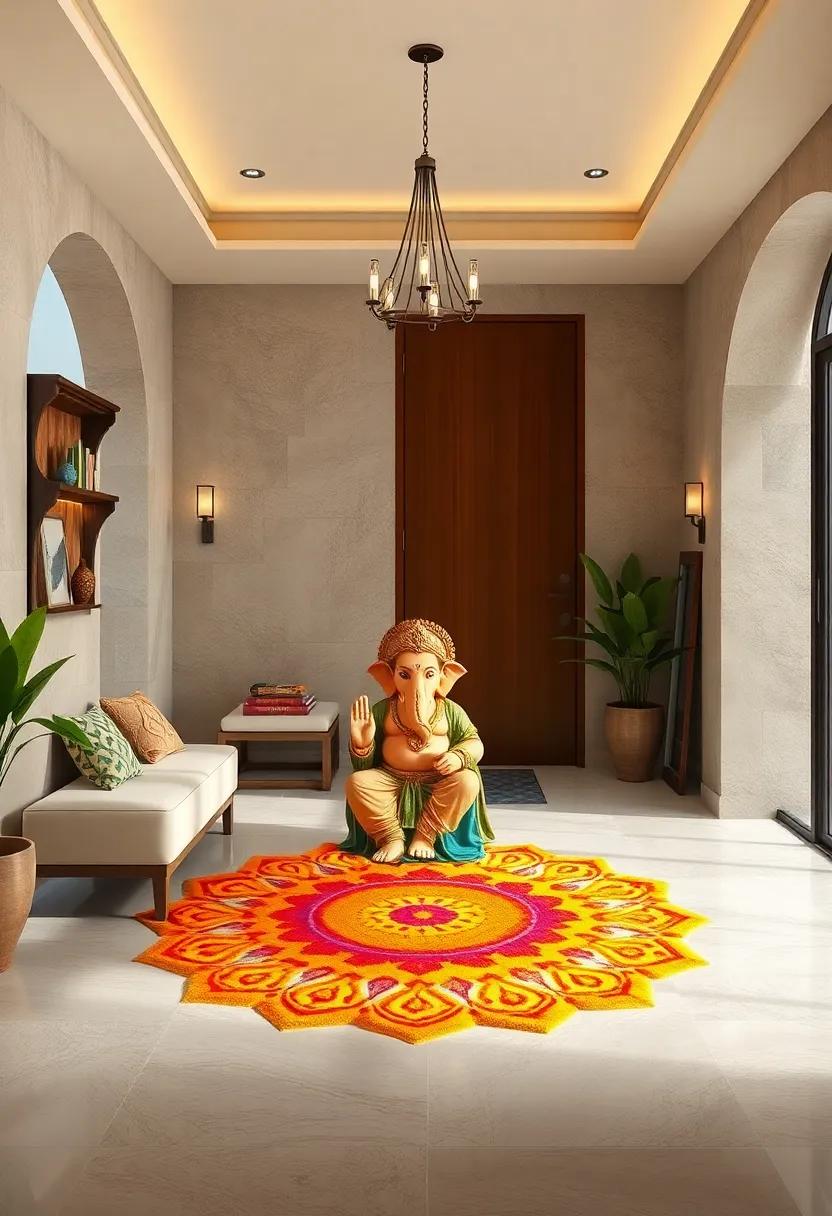
Elevate your doorstep décor by featuring the majestic visage of Lord Ganesha in your rangoli design. Renowned as the remover of obstacles and the harbinger of auspicious beginnings, Ganesha motifs infuse a spiritual aura into your entryway. Using a palette of vibrant reds, oranges, and golds not only symbolizes prosperity and energy but also commands the attention of every visitor. Intricate details like the trunk swirling into a paisley pattern or the gentle curves of his elephant ears can add a delicate yet powerful charm, rooting the design firmly within tradition while embracing artistry.
Combine the central Ganesha figure with classic rangoli elements such as lotus petals, diyas (oil lamps), and peacock feathers to create a harmonious composition that resonates with positivity and fortune. Incorporating bold outlines and subtle shading enhances the three-dimensional effect, making the rangoli come alive under natural light. Here’s a simple breakdown of visual features to experiment with for a balanced and auspicious arrangement:
| Element | Symbolism | Color Suggestions |
|---|---|---|
| Ganesha’s Trunk | Wisdom & Adaptability | Deep Red, Maroon |
| Lotus Petals | Purity & Enlightenment | Pink, Soft White |
| Diyas | Hope & Illumination | Orange, Yellow |
| Peacock Feathers | Beauty & Protection | Blue, Green |
Lotus Rangoli: Featuring the sacred lotus flower, this design symbolizes purity and spiritual awakening
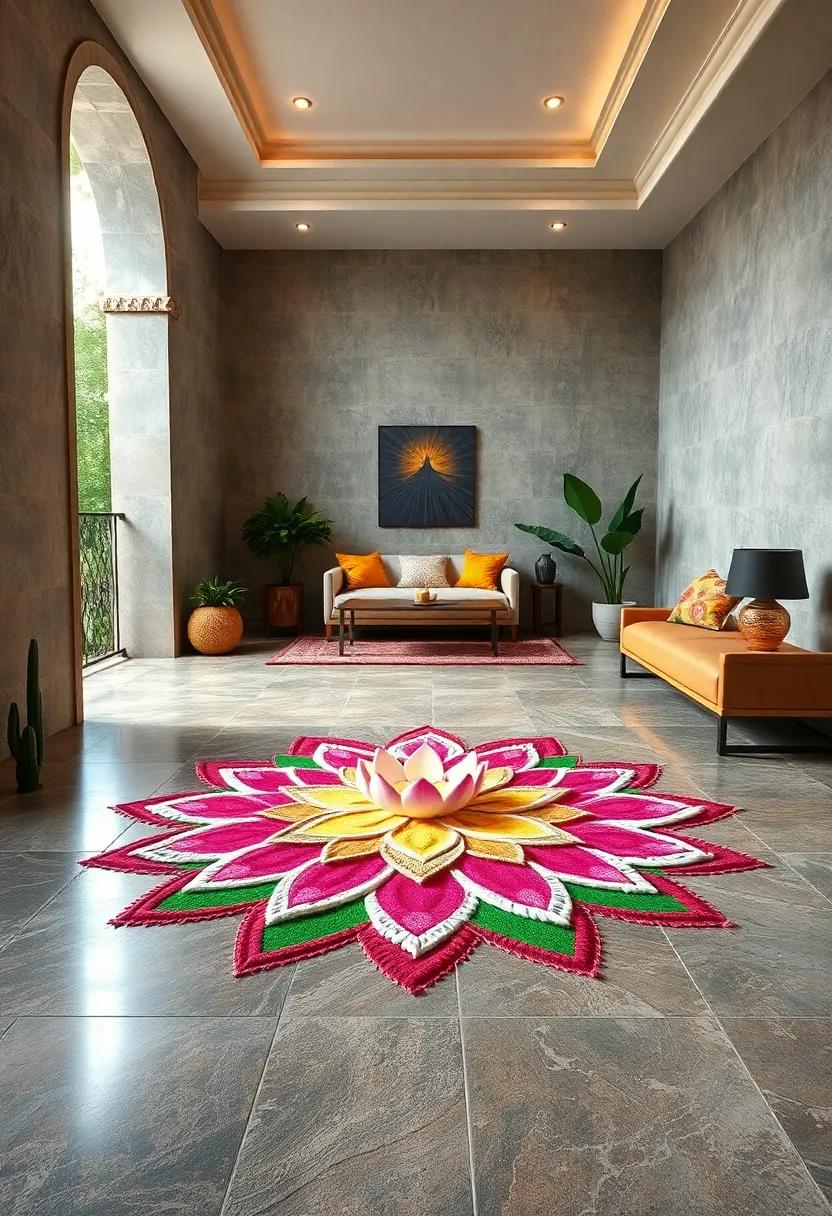
The sacred lotus flower has inspired centuries of Indian artistry,and incorporating it into a rangoli design brings an air of serenity and devotion to your doorstep. This pattern often features meticulously drawn petals radiating outward, symbolizing the journey from darkness to light-mirroring spiritual awakening. Using vibrant pinks, whites, and soft greens, the design captivates attention while inviting a sense of inner purity and calm. Its symmetrical beauty makes it perfect for welcoming guests with a message of peace and auspiciousness.
Key elements that elevate the lotus rangoli include:
- Delicate layering of petal shapes to create depth and fluidity
- A balanced color palette emphasizing natural hues of the lotus
- Subtle use of dots and circular patterns to enhance intricacy
- Integration of traditional motifs like small diyas or swirls around the lotus
| Color | Symbolism | Ideal Placement |
|---|---|---|
| #F28AB2 (Pink) | Compassion & Love | Center of Rangoli |
| #FFFFFF (White) | Purity & Peace | Petal Highlights |
| #A8D5BA (Soft Green) | Growth & Renewal | Leaf Accents |
Tribal Rangoli: Bold, monochrome patterns inspired by indigenous Indian art, characterized by sharp lines and shapes
Tribal Rangoli designs make a striking impression with their bold, monochrome aesthetics that draw inspiration from india’s rich indigenous art traditions. These patterns are defined by sharp lines, geometric shapes, and repetitive motifs that evoke the raw beauty and cultural depth of tribal communities.Using a single color-often black or deep earthy tones-against a contrasting background, these rangolis create a powerful visual contrast that commands attention and invites introspection.The simplicity of the palette is compensated by the intricate detailing of angular patterns that often symbolize natural elements, folklore, and spiritual concepts.
Perfect for those who appreciate minimalist yet impactful décor, these designs can be customized to fit entryway steps or focal points during festivals. Incorporate elements like zigzags, triangles, diamonds, and intersecting lines to echo traditional tribal art, making your space feel authentically grounded and culturally connected. Tribal Rangoli not only beautifies your doorstep but also celebrates and preserves indigenous artistry, blending heritage with contemporary expression.
Festival-Themed Rangoli: Designs that celebrate specific festivals like Diwali or Pongal with thematic symbols and colors

Bringing the spirit of joyous celebrations right to your doorstep, these festival-inspired rangolis incorporate vivid symbolism and traditional shades that resonate deeply with the essence of each festival. For Diwali, vibrant hues of red, orange, and gold come alive in intricate patterns featuring diyas (oil lamps), lotus flowers, and peacock motifs, all beautifully representing light overcoming darkness. Meanwhile, Pongal-themed rangolis burst with earthy tones-rich ochres and verdant greens-often adorned with sugarcane stalks, sun motifs, and pot designs, paying homage to the harvest and abundance.
In crafting these thematic rangolis, specific symbols carry profound meanings, making each design an artistic storytelling medium. Consider this quick guide to pairing festivals with iconic motifs and colors:
| Festival | Key Colors | Thematic Symbols |
|---|---|---|
| Diwali | Gold, Red, Orange | Diyas, Lotus, Peacocks |
| Pongal | Ochre, Green, Yellow | Sugarcane, Sun, Pot |
| Holi | Multicolor Spectrum | Color splashes, Flowers, Playful Patterns |
| Navratri | Red, Yellow, Blue | Tridents, Garlands, Garba motifs |
These designs not only infuse your entryway with festive cheer but also invite guests to partake in the cultural richness, making your home a vibrant extension of the celebration itself.
Elephant Motif Rangoli: Majestic elephants adorned with elaborate patterns express strength and good fortune

The elephant motif rangoli captures the essence of grandeur and auspiciousness, featuring majestic elephants embellished with intricate patterns. These designs frequently enough incorporate traditional elements like paisleys, floral swirls, and geometric shapes that harmoniously merge to celebrate the animal’s symbolism of strength, wisdom, and good fortune. Using vibrant hues of red, gold, and green, artists create a captivating visual narrative that instantly energizes the entryway, welcoming guests with a regal charm.
in addition to their striking aesthetics, elephant rangolis are believed to invite positive energy and protection into the home. Whether outlined with bold chalk or filled with colorful powders and flower petals, the detailed tusks, trunks, and ornate blankets on the elephants add layers of cultural storytelling. For those seeking inspiration, the following elements can be combined to enhance the motif’s impact:
- Traditional Indian ornamental patterns like mandalas and henna designs
- Touches of gold or silver glitter for a festive shimmer
- Use of natural materials such as colored rice or flower petals for texture
- Symmetrical border designs framing the elephant for balance
Circular Spiral Rangoli: Dynamic spirals create a sense of movement, drawing visitors deeper into the space

The mesmerizing play of concentric circles in this rangoli design mimics the natural allure of a whirlpool or galaxy, making it a captivating focal point for any entrance. The spirals elegantly channel energy inward, guiding guests along a visual journey that feels both warm and inviting.Crafted with vibrant powders or delicate flower petals, each swirl varies in thickness and color, producing an optical rhythm that enlivens the space and invites a closer recognition of the intricate details.
This dynamic pattern seamlessly blends tradition with movement, transforming static art into an interactive experience. To replicate this design, consider the following artistic elements:
- Color Gradients: Transition from warm reds and oranges at the center to cool blues and greens on the outer rings for depth.
- Layer Variations: alternate thick and thin spirals to create a sense of flow and dimension.
- Texture Play: Mix fine powders with textured materials like rice grains or flower petals for tactile contrast.
| Spiral Feature | Effect | Materials Suggested |
|---|---|---|
| Center Focus | draws eye inward | Bright yellow powder |
| outer Swirls | Creates flow | Multi-colored flower petals |
| Line Thickness | Enhances movement | Chalk powder & rice grains |
Paisley Rangoli: Traditional paisley shapes filled with intricate details and vibrant hues offer rich visual appeal
Paisley Rangoli designs bring a timeless charm to any doorstep, combining the elegance of traditional Indian motifs with the vibrancy of contemporary colors. these gracefully curving teardrop-shaped patterns are often adorned with intricate internal details such as fine lines, dots, and floral touches that create a captivating play of texture and depth. Using a brilliant palette of reds, oranges, pinks, and blues, artists fill the paisley forms with contrasting hues that not only highlight their contours but also evoke a festive, welcoming spirit. The rhythmic repetition and layering of details give these rangolis a mesmerizing effect, making them ideal for both auspicious occasions and daily decor alike.
To enhance the visual richness of paisley rangoli, artists frequently enough incorporate complementary elements around the core shapes. These may include:
- Delicate floral sprays entwining the paisley curves
- Geometric patterns like concentric circles or diamond grids filling spaces between paisleys
- Bright dot work outlining the design, enhancing symmetry and balance
Such embellishments amplify the artistic complexity and ensure that the rangoli feels both dynamic and harmonious.Whether crafted with traditional colored powders or modern acrylic paints, paisley rangoli continues to captivate hearts, symbolizing prosperity and the joyous spirit of Indian celebrations.
Conch Shell Rangoli: Symbolizing auspiciousness, the conch shell design adds a sacred touch to the entrance
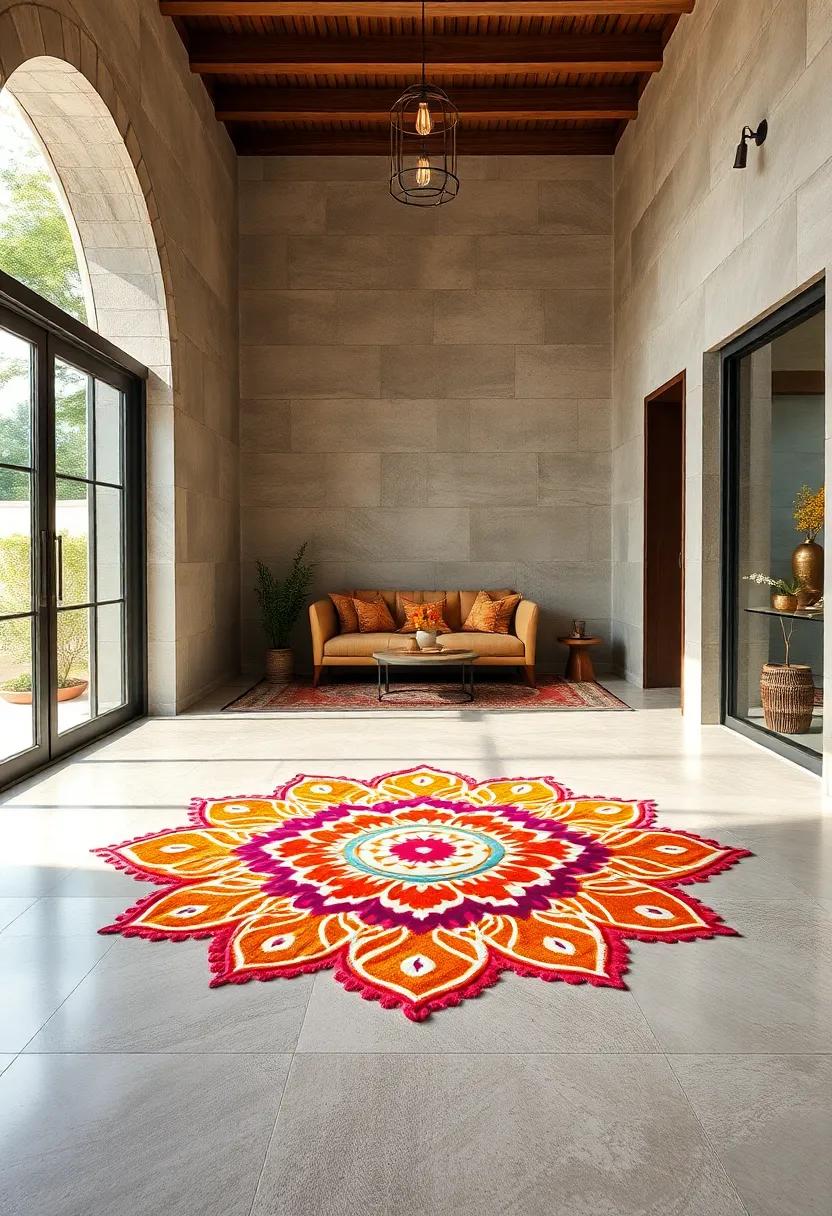
The conch shell motif in rangoli designs holds a deep spiritual resonance, often regarded as a harbinger of prosperity and purity. Its elegant spirals and curves mimic the form of the sacred Shankha, a symbol cherished in Hindu culture for invoking divine energy and protection. When crafted at the doorstep, this design not only elevates the aesthetic appeal but also invites positive vibrations into the home, blessing the space with a sense of tranquility and sanctity.
Incorporating the conch shell into your rangoli opens a creative avenue filled with vibrant colors and intricate detailing.artists frequently enhance the design with floral accents, geometric borders, and shimmering powder or rice grains to highlight the shell’s contours. The harmonious blend of traditional symbolism with artistic flair ensures the entrance feels both welcoming and spiritually uplifting. Here’s a quick guide to key elements that make a conch shell rangoli truly captivating:
- Curved Swirls: Representing the shell’s natural spiral form,these create fluidity and grace.
- Bright Contrast Colors: Reds, oranges, and golds to signify auspiciousness.
- Floral Embellishments: Marigold petals or jasmine accents to deepen the sacred aura.
Fish Motif Rangoli: representing fertility and abundance, fish patterns are both meaningful and visually charming
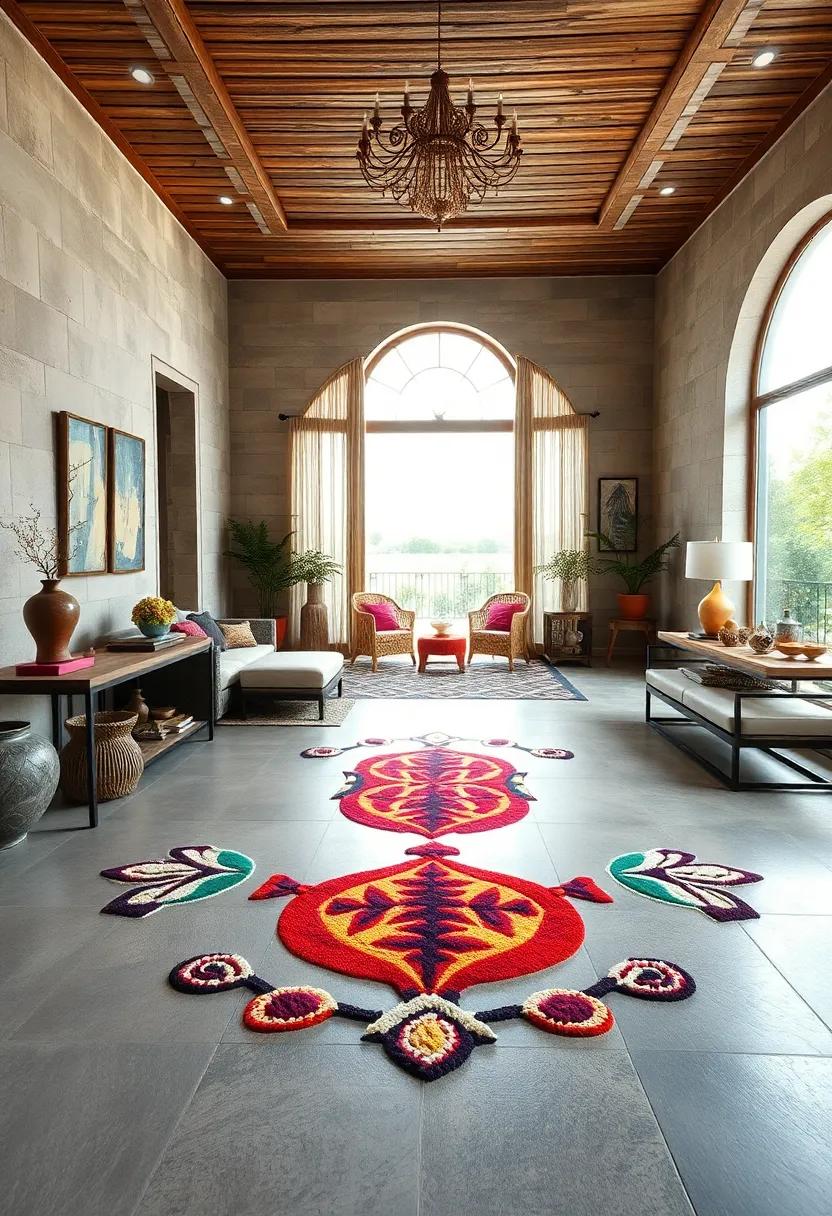
Delicately weaving tradition with artistic flair, fish motif rangolis are a timeless choice that embody prosperity and growth. These designs often feature flowing,curved lines that mimic the graceful movement of fish swimming,symbolizing fertility and abundance. Crafted with vibrant hues and intricate detailing, the fish patterns invite positive energy and auspiciousness right at your doorstep, making them a perfect welcome for festivals and special occasions.
To create these lively artworks, artists frequently use a combination of natural powders, colored rice, and flower petals to emphasize the fluidity of the fish forms. This tactile approach adds depth and texture, bringing the motifs to life. For a quick reference, here’s a simple guide to popular color meanings in fish rangolis:
| Color | symbolism |
|---|---|
| Blue | Calmness & Tranquility |
| Orange | Energy & Vitality |
| Green | Growth & Fertility |
| Yellow | Happiness & Wisdom |
- Perfect for: Weddings, harvest festivals, and housewarming ceremonies.
- Common variations: Single large fish, paired fishes representing harmony, or multiple small fish swimming in rhythm.
- styling tip: Incorporate water wave patterns around fish to enhance the flow and vibrancy of the design.
rangoli Borders: Decorative edging designs that frame your entrance perfectly, enhancing the main artwork

Adding a decorative frame around your main rangoli elevates the entire design, making it look polished and inviting. borders can vary from simple geometric patterns to intricate motifs inspired by traditional Indian art, such as paisleys, floral trails, or symmetrical dots. These edges create a visual boundary that not only enhances the artwork’s appeal but also guides the eyes, highlighting the vibrant colors and details within the center piece. Consider using contrasting colors or metallic powders to make your borders pop against the base rangoli, giving your entrance a fresh and festive aura.
Popular elements to include in rangoli borders:
- Repetitive floral patterns with marigold-inspired petals
- Symmetrical dot work aligned in cascading rows
- Intricate lace-like linear designs for a delicate touch
- Bold, geometric shapes that create striking contrasts
- Miniature diyas or lamps sketched along the edge for Diwali
| Border Style | Vibe | Best For |
|---|---|---|
| Floral Motifs | Elegant & Soft | Spring festivals, weddings |
| Geometric Lines | Modern & bold | Contemporary homes, minimalist themes |
| Dot Cascades | Traditional & Simple | Everyday decoration, casual gatherings |
| Mini Diyas | Festive & Warm | diwali, religious events |
Tree of Life Rangoli: A symbolic design depicting growth and connection using branches, leaves, and roots
Immerse your entryway in nature’s symbolism with this stunning design that integrates the essence of the Tree of Life. The rangoli captures the continuous cycle of growth through its intricately woven branches stretching outward, symbolizing expansion and the countless paths life offers. Vibrant green leaves sprinkle the design with fresh energy, while detailed roots anchor the pattern firmly, representing stability, family ties, and the deep-rooted connections we hold. this rangoli is more than just decoration-it’s an artistic manifestation of harmony and balance,inviting positive energies to flow into your home.
The color palette ranges from earthy browns and greens to subtle golds and reds, emphasizing the natural world’s beauty while maintaining a festive vibe. Utilize bright powders or flower petals to add texture and depth to the design. For added visual interest,consider incorporating small elements like diyas or colored stones around the peripheral branches and roots. This harmonious blend not only enlivens your doorstep but also encourages reflection on personal growth and the interwoven relationships that nurture us.
Abstract Rangoli: Modern interpretations of traditional rangoli with fluid shapes and a creative use of color

Embracing a fresh take on cultural heritage, these designs draw inspiration from the fluidity of water and the organic curves found in nature. Bold strokes mingle with soft gradients, weaving a tapestry of color that dances across your doorstep. The essence of tradition is preserved through motifs that subtly nod to classic patterns, yet they are reimagined with an eye for abstraction - inviting the viewer to explore new meanings beyond familiar shapes.
Color palettes here range from vivid jewel tones blending seamlessly with pastel hues, to monochromatic schemes that emphasize shadow and form. This harmonious disruption beckons creativity:
- granular transitions from deep indigo to soft lavender
- Splashes of marigold and coral upon a muted background
- Unexpected bursts of teal and mustard in asymmetrical layouts
| Design Element | Modern Flair | Traditional Link |
|---|---|---|
| Fluid Curves | Asymmetric, free-flowing forms | Petal and vine motifs |
| Color Use | gradient and blended hues | Solid, bold powders |
| Overall Layout | Open, airy compositions | Symmetrical mandalas |
Symmetrical Paisley and Floral Fusion: Combining two classic motifs for an intricate and harmonious pattern
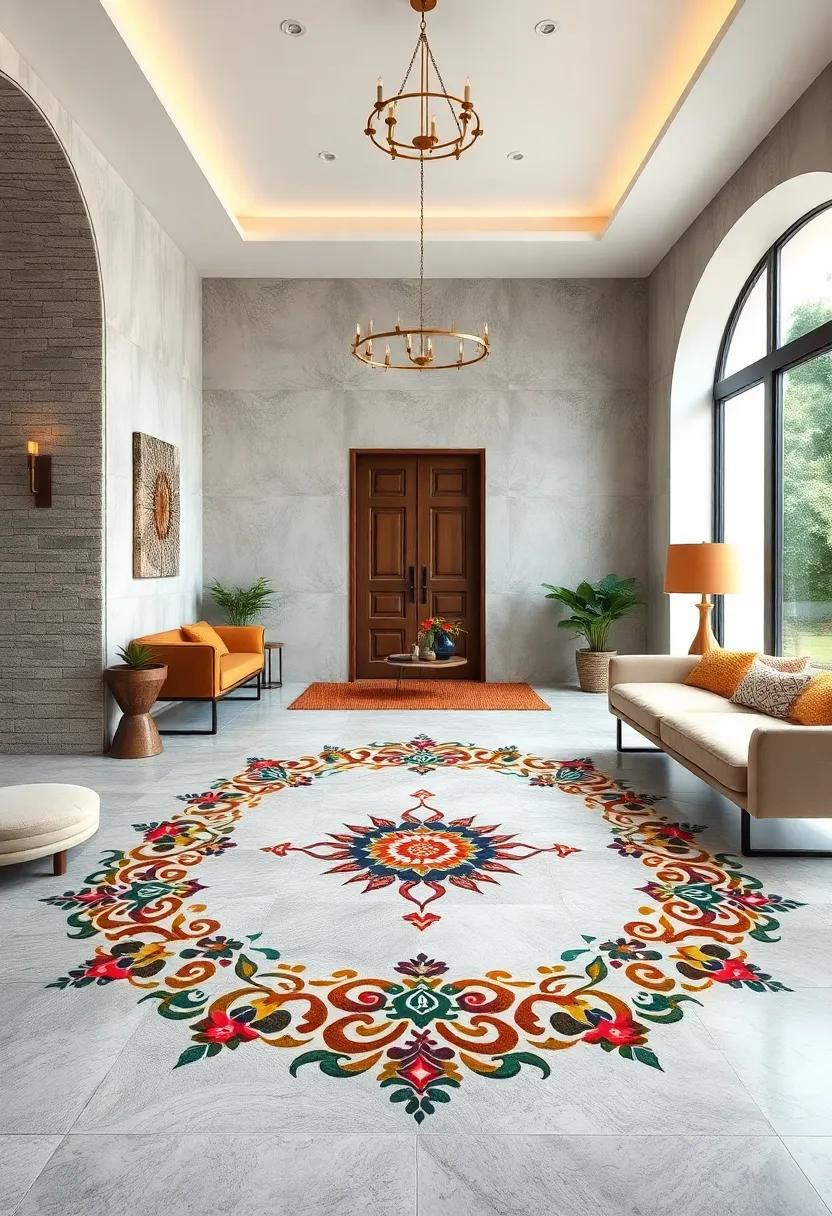
At the heart of this design lies a mesmerizing dance between the swirling paisley shapes and blooming floral elements,meticulously arranged to achieve perfect symmetry. Each paisley curve wraps around delicate petals, forming a visually balanced composition that celebrates the rich heritage of Indian artistry. The harmony of these motifs creates a captivating rhythm, inviting onlookers to pause and appreciate the intricate detailing that transforms a simple rangoli into a work of art.
Crafted with bold strokes and vivid colors, this pattern embraces traditional vibrancy yet exudes contemporary finesse. The interplay of soft floral hues with the deep, earthy tones of paisley shapes elevates the overall aesthetic, making it an ideal choice for entryway steps that seek to welcome guests with warmth and elegance. To replicate this style, focus on:
- Maintaining strict symmetry along vertical and horizontal axes
- Layering overlapping motifs for depth and texture
- Using contrasting colors to highlight individual elements
| Motif | Color Palette | Symbolism |
|---|---|---|
| Paisley | Deep Indigo, Maroon | Fertility & Life |
| Floral | Soft Pink, Sunshine Yellow | growth & Renewal |
| Symmetry | Neutral White Base | Balance & Harmony |
Gudi Padwa Rangoli: Festive design celebrating the Maharashtrian New Year with bright colors and cultural symbols
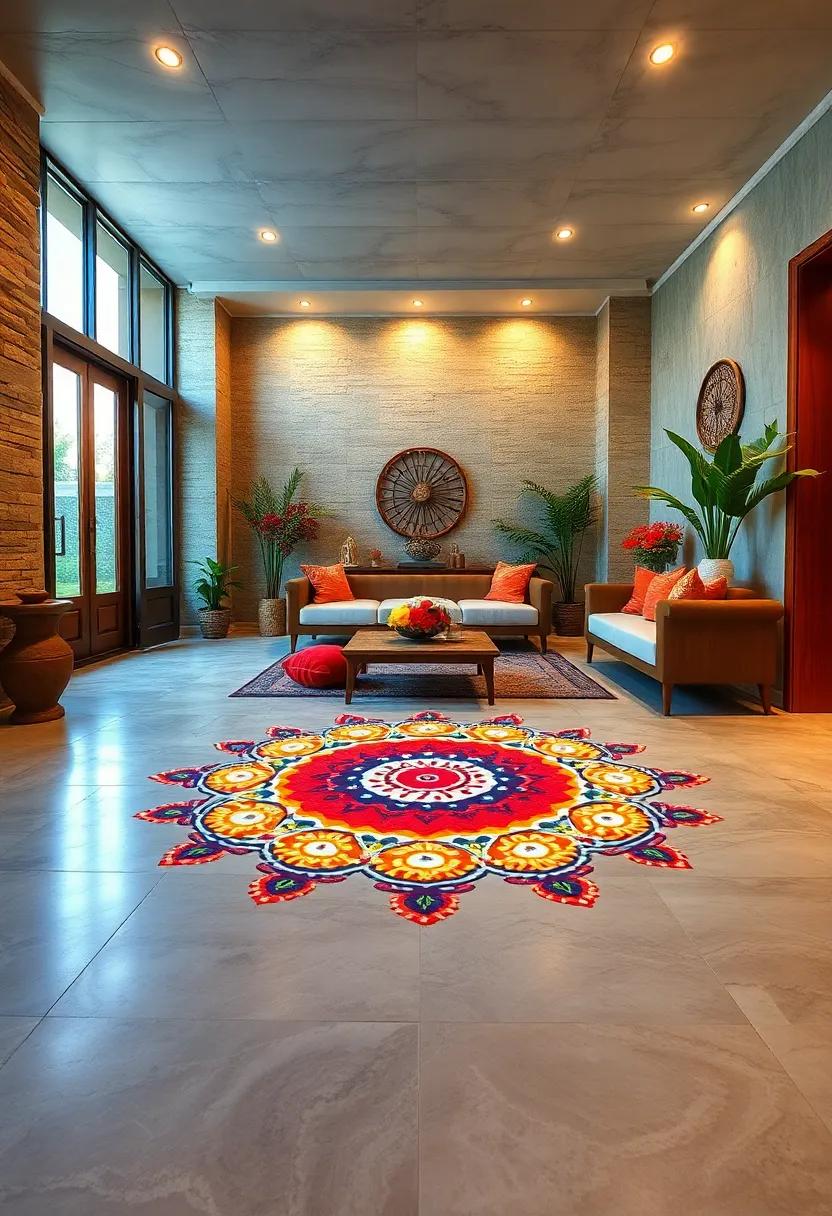
Embrace the vibrant spirit of the Maharashtrian New Year through a Gudi Padwa Rangoli that perfectly blends tradition with a burst of colors. These designs often feature the iconic Gudi (a decorated bamboo stick draped with a bright silk cloth and adorned with neem leaves and mango leaves), symbolizing victory and prosperity. Incorporating this element alongside motifs like mango leaves, marigold flowers, and auspicious Swastika symbols creates a welcoming aura that honors cultural roots while enchanting your doorstep. The use of resplendent reds, greens, and yellows energizes the space and invites festive joy right at the entrance.
To craft a stunning Gudi Padwa Rangoli, artists often combine simple geometric patterns with natural elements, encouraging creativity and celebration.Here are some popular visual elements to include:
- Gudi stick – Centerpiece representing victory over evil
- Mango and Neem Leaves – Symbols of health and freshness
- Marigold Florals – Emblems of auspicious beginnings
- Swastika Motifs – Signifiers of good fortune and well-being
With these components in mind, you can create a bright and culturally rich rangoli that reflects the joyous, hopeful energy of gudi padwa and warmly welcomes guests into your home.
Sohan Papdi Inspired Rangoli: Designs mimicking the geometric shapes of the traditional sweet, blending culinary art with rangoli
Celebrate the geometric charm of the beloved Sohan Papdi by translating its unique diamond and layered square shapes into an eye-catching rangoli design. This style perfectly blends culinary artistry with traditional rangoli, creating a visual feast that honors the sweet’s intricate texture. Use vibrant shades of yellow, deep saffron, and white chalk powder to mimic the flaky, golden layers of the confection, while incorporating small dotted patterns to represent its crispy essence. The repeating geometric motifs add symmetry and balance, making it a captivating centerpiece for your entrance during festive occasions.
To enhance the design, try incorporating these elements for a truly authentic Sohan Papdi-inspired rangoli:
- Diamond-shaped patterns: the iconic shape of the sweet arranged in a tiled format.
- Layered squares: Representing the multiple flaky layers of Sohan Papdi.
- Fine dotted detailing: Mimicking the sugar crystals and confections sprinkled on top.
- Bright yellows and golds: Evoking the warmth and sweetness of the traditional dessert.
| Design Element | Symbolism | Color palette |
|---|---|---|
| Diamond shapes | Sweet’s signature shape | Yellow & golden hues |
| Layered squares | Textural layers of pastry | White & pale cream |
| Dotted details | Sugar crystals | Bright white |
Peacock Feather Border Rangoli: delicate feather outlines that add elegance and a natural theme to the doorstep
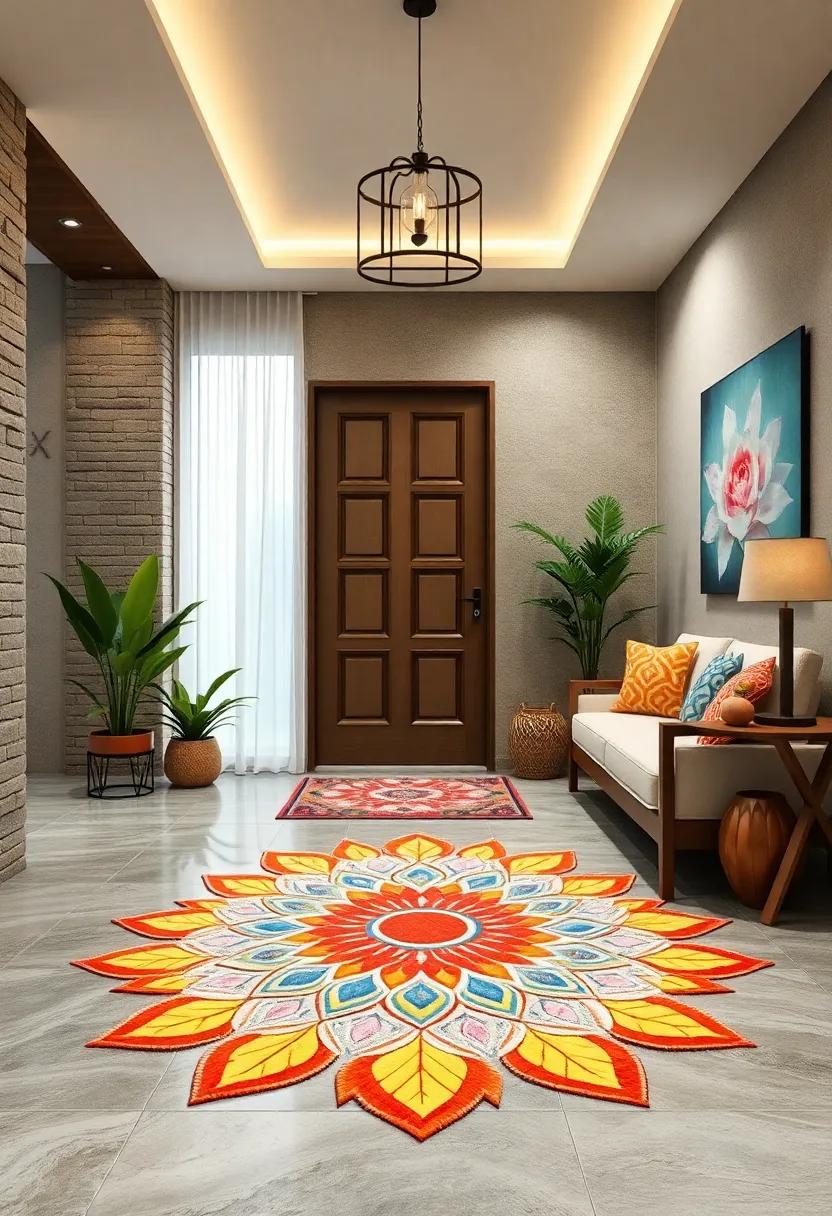
The delicate contours of peacock feathers lend a mesmerizing grace to this rangoli design, effortlessly capturing the essence of nature’s artistry. each feather outline is meticulously crafted with fine powder colors, highlighting subtle gradients from vibrant teal to shimmering gold.This border style not only frames your doorstep with artistic finesse but also invokes a serene ambiance that reflects the timeless elegance of Indian tradition. The fluid curves and eye-like patterns within the feathers create a harmonious blend of symmetry and organic flow, making your entryway truly inviting.
Why choose this design?
- Enhances the doorstep with a natural and regal touch
- Requires minimal but precise strokes, perfect for those who enjoy detail work
- Pairs beautifully with floral or geometric motifs for added depth
- Symbolizes beauty, spirituality, and auspiciousness in Indian culture
| Design Aspect | Description | Best Color Palette |
|---|---|---|
| Feather Outline | Fine, delicate strokes mimicking feather barbs | Teal, turquoise, emerald green |
| center “Eye” | Small, rounded shapes with layered colors | Gold, navy blue, burnt orange |
| border Thickness | Thin enough for elegance but visible from afar | White or off-white for contrast |
To Conclude
Whether you choose intricate floral patterns, geometric shapes, or vibrant motifs inspired by nature, these 23 traditional Indian rangoli designs are sure to add a splash of color and positivity to your entryway steps. Each design carries its own story and symbolism, inviting warmth and good fortune into your home. So go ahead-unleash your creativity, embrace this beautiful cultural art form, and let your doorstep become a radiant canvas that welcomes every visitor with joy and tradition.
As an Amazon Associate I earn from qualifying purchases.



